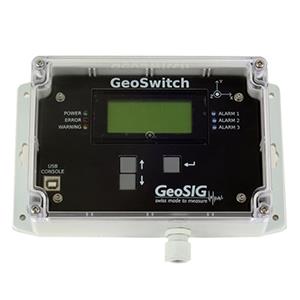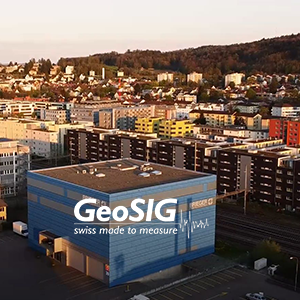GeoSIG CR-5P Monitoring system
Key Features
- Multichannel modular central seismic / earthquake / structural monitoring and recording system
- Accessible from anywhere around the world through internet
- Cable saving via distributed data acquisition nodes
- 3, 6 or 9 Channel Modules, 19'' rack mountable and expandable to several hundred channels
- 24bit resolution
- Sampling rates 50, 100, 200, 500 SPS
- External 12 VDC Power Supply
- Rugged industrial portable or fixed housing
- Galvanic isolation and over voltage protection
- GPS synchronised recording available
- Real time display of dynamic channels
- Large capacity data storage options
- On-line surveillance, diagnostics, self checking and reporting system
- Email messanger
The CR-5P, now a legacy product, was developed out of years of experience in monitoring civil engineered structures such as dams, nuclear power plants, pipelines, tunnels, bridges, tall buildings and unique structures all over the world. This modern multichannel central recording monitoring system provided engineers with a valuable tool to fully understand and analyse the dynamics of structures in the operating environment.
With a CR-5P system the dynamics affecting the structure including but not limited to acceleration, velocity, displacement, temperature, current, wind speed, wind direction, stress and pressure could be monitored and recorded. Dynamic channel sample rates of 50, 100, 200 and 500 SPS could be provided. The system was based on synchronised multi-channel A/D converters. After hardware anti-aliasing filtering, the signals were digitised using the over-sampling and decimation technique, resulting in superior data quality.
The heart of the CR-5P software was GeoDAS, a proven data logger and data analysis package developed by GeoSIG Ltd. GeoDAS is frequently used in large seismic networks. GeoDAS was integrated into the CR-5P central recording monitoring system, and provided a richly configured set of user-friendly capabilities, displays and analytical tools running under Windows XP operating system. Optionally, SEISLOG could also be used. In addition to the near real-time display of the dynamic channels, the system provided static data like mean, max, min, and peak values. The CR-5P monitored the real-time data generated by each of the sensors attached to the system and compared the measured data to five fully independent alarm trigger criteria. The ring buffer size, the post event time, trigger thresholds and relay alarm on/off times could be selected by the customer. A comprehensive surveillance, diagnostics reporting system through alarm relays, SMS and Email was provided.
With a CR-5P system the dynamics affecting the structure including but not limited to acceleration, velocity, displacement, temperature, current, wind speed, wind direction, stress and pressure could be monitored and recorded. Dynamic channel sample rates of 50, 100, 200 and 500 SPS could be provided. The system was based on synchronised multi-channel A/D converters. After hardware anti-aliasing filtering, the signals were digitised using the over-sampling and decimation technique, resulting in superior data quality.
The heart of the CR-5P software was GeoDAS, a proven data logger and data analysis package developed by GeoSIG Ltd. GeoDAS is frequently used in large seismic networks. GeoDAS was integrated into the CR-5P central recording monitoring system, and provided a richly configured set of user-friendly capabilities, displays and analytical tools running under Windows XP operating system. Optionally, SEISLOG could also be used. In addition to the near real-time display of the dynamic channels, the system provided static data like mean, max, min, and peak values. The CR-5P monitored the real-time data generated by each of the sensors attached to the system and compared the measured data to five fully independent alarm trigger criteria. The ring buffer size, the post event time, trigger thresholds and relay alarm on/off times could be selected by the customer. A comprehensive surveillance, diagnostics reporting system through alarm relays, SMS and Email was provided.
































